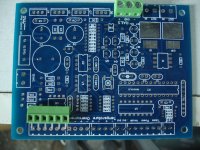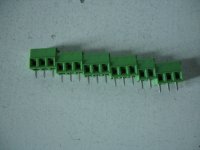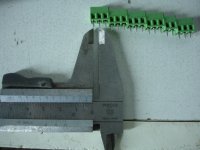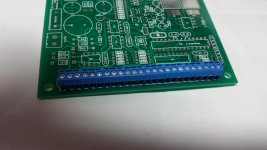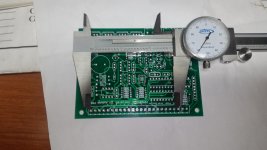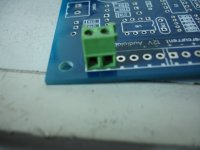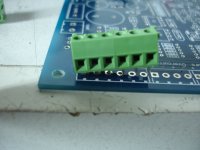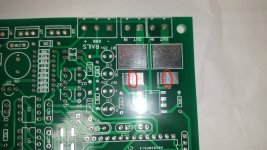Do I understand you are not using a pc for AVR programming? Atmel's Studio is pretty good for programming their devices.
Sent from my HUAWEI MT7-L09 using Tapatalk
Sent from my HUAWEI MT7-L09 using Tapatalk
The process is the following:
- Writing the source code in a text editor;
- Compiling in Arduino programming environment;
- Uploading the compiled module to the chip.
The last step depends on the design we use. In earlier versions of the control board we used Arduino Nano - just uploaded via USB (FTDI) and plugged Nano into the control board. In the later versions ATMel chip is used separately, so it is plugged into Arduino Uno board first, the module is loaded normal way, and then we move the chip to the control board.
- Writing the source code in a text editor;
- Compiling in Arduino programming environment;
- Uploading the compiled module to the chip.
The last step depends on the design we use. In earlier versions of the control board we used Arduino Nano - just uploaded via USB (FTDI) and plugged Nano into the control board. In the later versions ATMel chip is used separately, so it is plugged into Arduino Uno board first, the module is loaded normal way, and then we move the chip to the control board.
Is there a substitute for the HCPL2530? I can't find those anywhere.
Hi Terry,
Mouser has got a lot of them:
HCPL2530 Fairchild Semiconductor | Mouser
Cheers,
Valery
That is the weirdest thing. I searched several times with no luck. I first had a problem because the silk is wrong on the boards I have. The silk says HCLP2530. But, then I did a google search and the correct spelling showed up but still no joy with Mouser or Digikey. Now I find it on Digikey but Mouser's site is down so I will have to wait for them. I generally use Mouser when I can. Anyway, thanks for finding them for me, I will get them ordered today. I've been playing around with hybrids again so I want to finally get one mounted in a case so I will be needing one of these boards again.
Blessings, Terry
Blessings, Terry
I have difficulties with this connector . This can't sit well here. Especially the next one
I used Tyco 1776275-x terminal blocks clipped together to make a row for there. The signal connectors are 3.5mm spacing. Power connectors (speakers, rails and AC) are 5mm spacing.
I used Tyco 1776275-x terminal blocks clipped together to make a row for there.I used Tyco 1776275-x terminal blocks clipped together to make a row for there. The signal connectors are 3.5mm spacing. Power connectors (speakers, rails and AC) are 5mm spacing.
Can you share the code number for this connector?
The x is the number of circuits. If you clip four 1776275-6 together, you will have a 24 circuit terminal block that will slip right in.
1776275-6 TE Connectivity / AMP | Mouser
1776275-6 TE Connectivity / AMP | Mouser
Thank you but looking at mouser data i see that spacing is 3.5mm just as mine.The x is the number of circuits. If you clip four 1776275-6 together, you will have a 24 circuit terminal block that will slip right in.
1776275-6 TE Connectivity / AMP | Mouser
Why they don't fit?I wonder for mine pcb accuracy...
Attachments
YesDo you have some way to measure the spacing?
Attachments
This fit well but when combining with other not fitWhat's the spacing on the board? I'm at the office now. I'll double check mine.
Attachments
I'm not sure if I've mentioned this already but, these vias should have wire soldered through them. They carry full speaker current.
Hi Jeff, thanks for the information. I have not done that as yet. Can you just fill it up with solder?
Quan
Last edited:
No vias are small size,solder won't pass thru this.Hi Jeff, thanks for the information. I have not done that as yet. Can you just fill it up with solder?
Quan
- Home
- Amplifiers
- Solid State
- How to build a 21st century protection board
